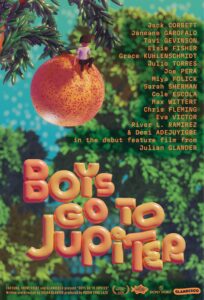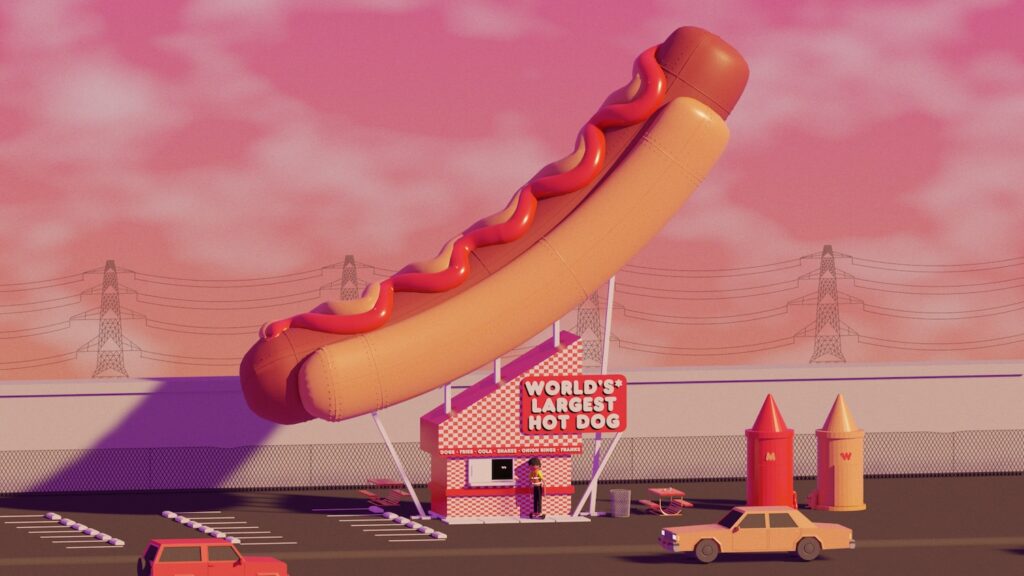
The medium of animation has seen an embarrassment of riches in the past few years, with filmmakers exploring new techniques and styles, opening up vast possibilities for audience experiences. Boys Go to Jupiter is no exception. Written and directed by Julian Glander in his feature-film debut, the film is predominantly a coming-of-age story set in Florida between Christmas and New Year’s, following a group of kids and teens approaching adulthood.
The plot, what there is of one, centers primarily on Billy “5000,” voiced by Jack Corbett. Billy may have an exceptional knack for numbers, hence his nickname, but his fixation on making money and breaking out on his own forces him to work tirelessly as a delivery worker. Billy and his friends face big life questions, navigate the ups and downs of trying new things and branching out in new directions, and attempt to dodge struggles and appreciate small joys where they find them. There are aliens, an orange juice conglomerate, young love, crime scenes, and robots.
Juggling tone is everything here. There’s an almost Zen-like quality to the film, even when the driving beats include anxiety around big life decisions, changing relationships, and finding yourself in situations way over your head. Being very much of-this-moment, Boys Go to Jupiter addresses the pain points of our gig economy with humor and wit, while also feeling timeless and, upon occasion, downright retro, in the best way. There’s a noticeable and admirable absence of many critiques aimed at young people regarding technology. Glander is clearly far more interested in other, quirkier questions and scenarios.
And, of course, there’s the animation itself. The 3D animation, its art direction, style, and execution, are the real stars here. The colorful and unique design and minimalist-but-effective cinematography choices offer tremendous charm. The characters strongly resemble classic toy dolls and even manage to occasionally evoke the mood of the stop-motion Rankin/Bass films. The camera moves often stay wide while the action plays out, to let the audience appreciate the breadth and fullness of the set pieces.
The one downside to this movie is that, structurally, it often comes across as a series of vignettes, rather than one, cohesive story. Threads do connect, but the breezy quality of the narrative does not necessarily feel as connected as it could have and, in parts, that contributes to the aforementioned Zen-like quality, which may, for some viewers, begin to drag. It’s entirely subjective. That said, in the film’s overall context, this manages to work, not so much due to the various story points actually connecting in the end—nothing is really left too open-ended—but because of the themes at play.
The incidental nature of Billy’s many experiences, along with those of his friends, rings true of their time in life: the shift of endings to new beginnings and just trying to figure things out, taking life as it comes. There’s a sense of authenticity to the movie’s episodic framework. Boys Go to Jupiter may not be everyone’s cup of tea, but it offers a lot to be inspired by and love.

